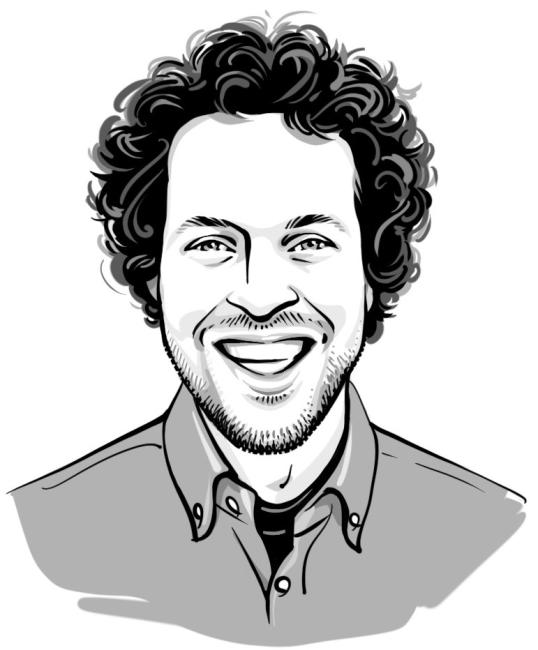April 2023: Handpicked
Each month, the Yiddish Book Center asks a member of our staff or a special friend to select favorite stories, books, interviews, or articles from our online collections. This month, we’re excited to share with you picks by Sam Brivic.

Sam Brivic is the membership manager at the Yiddish Book Center. Sam received his BA in history and geography from Clark University. He started working at the Center in 2019 as a summer staffer for Yidstock and gradually transitioned into his current fundraising and database management role. Sam was a child when he first heard about the Center from his grandparents, who have been enthusiastic, longtime members.
“Beards,” by Abraham Goldberg (translated by Daniel Kennedy)
Abraham Goldberg’s essay on the state of facial hair among American Jewry in the early 20th century reveals some of the anxieties of the time. Through the lens of the beard, Goldberg bemoans that one must shave off the culture of the shtetl to become American. Despite the underlying sadness, Goldberg’s playful tone and wry observations bring a smile to my bearded face.
Early on in my time at the Center, I came across this Pakn Treger article from 2015 about Allen Moore, architect of the Yiddish Book Center’s building. It is fascinating to read about Moore’s meticulous artistic process; the symbolism and care behind every architectural decision detailed in the article help explain why the building feels so alive. When I come to work in the morning and light pours in through the windows, I can’t help but think that the Yiddish books in the repository are “in the sunlight again.”
“An Old Woman with Young Dreams,” by Yente Serdatsky (translated by Jessica Kirzane)
So much is left unsaid about the characters that drift through Yente Serdatsky’s slice-of-life depiction of a day spent traversing New York. With vivid imagery and tight dialogue, Serdatsky makes it only natural to share in her intrigue with these passing strangers.
“The Esrog,” by Sholem Aleichem (translated by Curt Leviant)
This short story by Sholem Aleichem has it all: religious rituals, family and class dynamics, humor, sorrow . . . oh, and a talking piece of fruit. Set during sukes, the protagonist grapples with temptations as old as time.
I frequently find myself flipping through the Yiddish books on our shelves. There’s just one small hiccup—I don’t know Yiddish! As this “From the Vault” piece details, the little markings and alterations left behind by previous readers tell stories beyond each book’s original contents.
Q&A
Tell us about your selections and what they say about your relationship with Yiddish language and culture.
As a fundraising administrator I don’t work with Yiddish language or culture directly, but I’m amazed how much I’ve learned just from being in its vicinity. In my selections, I gravitated toward what feels most relatable and modern. In particular, I love that stories written a century or so ago can make me laugh. This feels a bit like time travel, revealing the commonalities between the mindsets of then and now. There is so much inspiration and insight to be drawn from Yiddish literature, and making this easily accessible to future generations is an essential aspect of my work.
What are you working on next?
In the spring we will be launching a campaign to raise funds for the Universal Yiddish Library. This groundbreaking project led by the Yiddish Book Center, in partnership with the YIVO Institute for Jewish Research, the National Library of Israel, and the New York Public Library will make the collections of all four institutions accessible through a single website. Nearly every Yiddish book ever published will be available to the public from the same place, free of charge!
